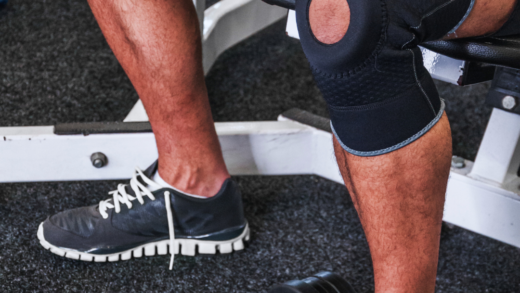Sustainable fashion is gaining traction, and fitness enthusiasts are increasingly seeking brands that align with their values. A selection of sustainable fashion brands can offer high-quality, eco-friendly activewear that meets both performance and ethical standards. By choosing these brands, individuals not only enhance their workout experience but also contribute to a cleaner planet.
In recent years, many companies have emerged, prioritising environmentally responsible materials and fair labour practices. Consumers now have access to leggings made from recycled plastic bottles and sports bras crafted from organic cotton. These innovations reflect a commitment to sustainability while providing stylish options for various workouts.
The rise in sustainable fitness apparel signifies a shift towards more mindful consumerism, allowing fitness lovers to invest in their health and the health of the planet. By supporting these brands, they can be part of a movement that encourages responsible production and consumption in the fashion industry.
Why Sustainable Fashion Matters in Activewear
Sustainable fashion in activewear is crucial for reducing environmental harm and promoting ethical manufacturing practices. This segment will explore the impact of fast fashion on the planet, the challenge of greenwashing, and the importance of ethical production in fitness apparel.
Environmental Impact of Fast Fashion
Fast fashion contributes significantly to environmental degradation. The fashion industry is responsible for approximately 10% of global carbon emissions, a substantial figure in light of climate change concerns. The rapid production cycles lead to excessive waste; millions of tonnes of textiles are discarded each year.
Activewear, often made from synthetic materials, exacerbates this issue. Many materials, like polyester, are derived from petroleum, leading to high carbon footprints. The production of these fabrics consumes vast amounts of water and energy, further depleting natural resources. Choosing sustainable brands can help mitigate these impacts.
Combatting Greenwashing in Sportswear
Greenwashing poses a significant challenge for consumers aiming to make eco-friendly choices. Brands may use misleading terminology or imagery to create a false impression of sustainability. Terms like “eco-friendly” or “green” can often be vague, lacking specific evidence of sustainable practices.
It is essential to scrutinise certifications and supply chain transparency. Brands demonstrating genuine commitment will often provide details about their ecological materials, production methods, and ethical practices. Familiarity with authentic eco-labels can help consumers navigate this complex landscape and support truly sustainable companies.
The Role of Ethical Manufacturing in Fitness Apparel
Ethical manufacturing is pivotal in the sustainable fashion movement. It involves fair labour practices, safe working conditions, and equitable wages for workers. By supporting brands that prioritise ethical standards, consumers can contribute to a healthier and more equitable industry.
In activewear production, brands should ensure transparency in their sourcing and manufacturing processes. This includes minimising environmental impact through responsible fabric choices and reducing carbon emissions. Brands focused on ethical manufacturing are more likely to employ innovative practices, incorporating recycled materials and renewable energy sources into their production lines.
Key Sustainable Materials in Fitness Clothing
Sustainable fitness clothing relies on materials that are environmentally friendly and contribute to a circular economy. Various innovative fabrics can significantly reduce environmental impact while ensuring comfort and performance for fitness enthusiasts.
Recycled Polyester and Ocean Plastics
Recycled polyester is a popular material in activewear due to its benefits in sustainability. It is made from post-consumer plastic bottles, helping to divert waste from landfills. The production process for recycled polyester uses less energy compared to virgin polyester, thereby lowering carbon emissions.
Ocean plastics are also making their way into fitness clothing, with brands utilising materials recovered from oceans. This practice not only aids in reducing ocean pollution but also transforms waste into functional, durable, and stylish garments.
Organic Cotton for Comfort and Performance
Organic cotton offers a soft, breathable alternative to conventional cotton, grown without harmful pesticides or synthetic fertilisers. Its cultivation promotes biodiversity and can utilise renewable resources, reducing the environmental footprint associated with traditional cotton farming.
Fitness clothing made from organic cotton can provide excellent moisture-wicking properties, offering comfort during intense workouts. Many sustainable brands prioritise organic cotton for its reduced environmental impact and improved durability, ensuring longevity in their products.
Innovative Sustainable Fabrics and Materials
A variety of new materials are emerging in the fitness clothing sector, such as Tencel, made from sustainably sourced wood pulp. This fabric is biodegradable and produced in a closed-loop process, significantly reducing waste.
Other innovative options include fabrics infused with algae, which can absorb CO2 during production, contributing to a lower carbon footprint. Some brands are also experimenting with materials made from banana fibres or recycled ocean debris, showcasing the potential for sustainable practices in fitness apparel.
Standout Sustainable Fashion Brands for Fitness Lovers
Sustainable fashion brands are increasingly catering to fitness enthusiasts, offering stylish, eco-friendly options that emphasise both performance and environmental responsibility. Here are key brands that prioritise sustainability in activewear.
Tala: Trendsetting Sustainable Activewear
Tala is at the forefront of sustainable activewear, created by influencer Grace Beverley. The brand focuses on using recycled materials, including post-consumer plastic, to produce high-quality, fashionable pieces. Their activewear ranges from leggings to sports bras, designed with an emphasis on functionality and style.
Tala’s commitment to transparency means customers can view the lifecycle of each product. The brand also promotes circular fashion through its recycling scheme, encouraging users to send back used garments for repurposing. With vibrant colours and trendy designs, Tala appeals to those who want to make a statement while staying eco-conscious.
Omnes: Ethical Gym Wear Essentials
Omnes offers a diverse selection of ethical gym wear that combines affordability with sustainability. This UK brand uses organic and recycled materials to create its pieces, ensuring minimal environmental impact.
Their collections feature basics as well as statement activewear suitable for various workout styles. Omnes champions ethical production processes, ensuring fair wages and working conditions for all workers. With a focus on timeless designs, their clothing can transition seamlessly from workout to leisure wear, making them versatile additions to any wardrobe.
Certified B-Corp and Other Notable Sustainable Clothing Brands
Several brands have achieved B-Corp certification, which indicates rigorous standards for sustainability and social responsibility. Alongside Tala and Omnes, noteworthy brands include Patagonia and Veja.
Patagonia is renowned for its environmental activism and commitment to sustainable practices, producing durable outdoor gear. Veja focuses on ethical trainers using organic materials and fair trade practices. Each of these brands supports a sustainable future by prioritising ethical supply chains and responsible manufacturing methods.
When selecting sustainable activewear, fitness lovers can confidently choose from these brands, knowing they are making informed and responsible decisions.
Building a Sustainable Workout Wardrobe
Creating a sustainable workout wardrobe involves careful selection of gym wear tailored to various activities, ensuring durability and versatility in athleisure choices, and embracing slow fashion practices. These elements contribute to both performance and environmental responsibility.
Choosing Gym Wear for Different Activities
When selecting activewear, it is crucial to consider the specific demands of each workout. For running, lightweight and breathable fabrics with moisture-wicking properties can enhance comfort. Look for sports bras designed for high-impact activities, ensuring proper support.
For yoga or pilates, opt for stretchy materials that allow for movement. Fabrics like organic cotton or recycled polyester are excellent choices, providing comfort while being environmentally friendly. A well-rounded workout wardrobe should include a mix of leggings, tops, and outer layers catering to diverse activities.
Durability and Versatility in Athleisure
Durability is a defining characteristic of sustainable athleisure. Brands focused on sustainability often use high-quality materials that withstand rigorous use. Look for items made from recycled materials or natural fibres that are both eco-friendly and robust.
Versatility is equally important. Pieces that transition seamlessly from the gym to casual settings reduce the need for excessive purchases. For instance, a pair of black leggings can be paired with a casual top for a day out, reducing their total lifecycle impact.
Transitioning to Slow Fashion Practices
Adopting slow fashion principles encourages consumers to choose quality over quantity. It involves investing in fewer items that boast longevity and timeless style. Look for brands that emphasise ethical production practices and transparency in their supply chains.
Repairing and recycling workout gear can significantly reduce waste. This not only prolongs the lifespan of clothing but also supports sustainable habits. Joining clothing swap events or resale platforms can further promote a circular economy within fitness fashion.





